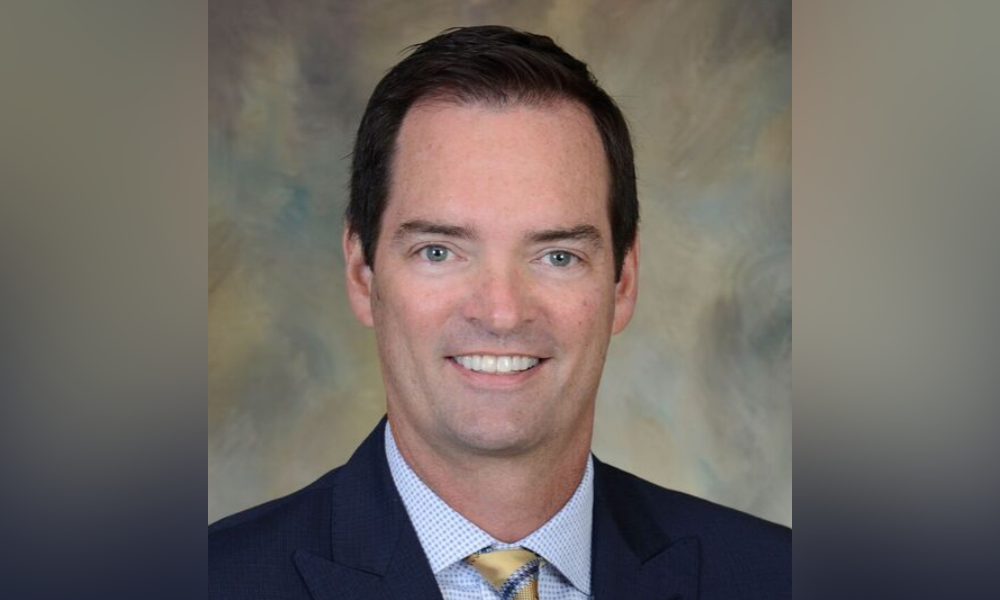We're not afraid of competition, it is good for the industry - Tom Hutchens

The demand for non-QM lending is at an all-time high and on course to break the previous record set before the COVID outbreak in 2019, data shows.
With business largely returning to normal since the pandemic, it is expected that non-QM lending will reach $25 billion this year, breaking the previous record set in 2019, according to market analyst, S&P Global.
The data echoes the findings of non-QM specialist Angel Oak, which began promoting the product eight years ago, in 2013.
Tom Hutchens (pictured), the executive vice president of production at Angel Oak Mortgage Solutions, expressed his delight at how the industry was now embracing non-QM, revealing that the conversation among brokers had changed.
Read more: S&P Global report foresees rapid non-QM growth in 2021
Speaking about the company’s presence at NAMB’s National Mortgage Broker conference in Las Vegas earlier this month, he said non-QM had been “an integral part” of the conference.
He said: “We had lots of people in Las Vegas and it’s more than interest now, it’s really about companies and lenders trying to have discussions on how to originate non-QM loans.”
Where once experts had to convince brokers on the merits of non-QM lending, originators were now actively having discussions on how to originate non-QM loans, saying that the attitude had changed from “interest to ‘how do we execute?’”
“Before it was us educating brokers on non-QM, explaining the benefits and why they should do it. Now it’s implementation discussions - that has just become the norm and it’s pretty exciting,” he added.
Angel Oak reached a milestone last month when it passed $10 billion in total non-QM volume, the company adding that it expected 2022 to be an even better year.
More recently, the company launched an aggressive advertising campaign to promote non-QM, focusing on such hotspots as California, Florida, Texas and Georgia.
Industry wide, non-QM lending reached a record $22 billion in 2019, before the COVID outbreak put a temporary break on growth. By the end of 2020, volume almost topped $16.9 billion - 20% below the previous year, with many lenders halting origination activity due to pandemic-led liquidity issues. Despite this, the result had been better than expected.
In any case, non-QM lending has been increasing its share of the mortgage market, particularly from 2018 onwards.
Read more: Aiming for faster closing of non-QM loans
With more people becoming self-employed, brokers are having to find alternatives to traditional forms of lending, and with the refinance boom coming to an end (refinance loans are down 25% from last year), brokers are being forced to look elsewhere for business.
According to the US Bureau of Labor Statistics, more than 9.6 million people are registered as self-employed in the country, while a report by the International Labor Organization said that the share of gig workers in the US was expected to rise to 43% by 2020, showing that non-traditional borrowers are becoming an increasingly important sector in the country’s economy.
Hutchens said there was momentum building around non-QM in the mortgage industry, and not just at Angel Oak. He said: “It’s really the whole space of non-QM lenders, and the interest is growing rapidly from the originator level, which is what we’ve always believed and experienced to some degree in the past.”
He dismissed concerns about the competition getting an increased share of the non-QM space, saying that it was “good for the entire industry”.
He said: “The more lenders offer it and the more competition there is, the more it raises the whole business.
“Lots of companies are getting in with non-QM, but lots of people haven’t been doing this exclusively for eight years. We believe we’ve proven ourselves and we’ve always said we don’t expect to be the only winner in non-QM, but we know we’re going to be one of the winners.”
He remained upbeat about the headwinds in the economy – mostly related to inflation and rate hikes - saying that he expected them to be “transitory”, although he expressed concern about the hottest topic currently doing the rounds in the industry – housing affordability.
“Housing affordability affects the entire economy, whether you’re doing agency or non-agency lending - there’s no real way to avoid that, but generally speaking, the market right sizes itself.
“There are some headwinds with inflation and other factors, but most economists paint a pretty positive outlook as we continue to emerge from COVID. This is just a problem because we’re transitioning back to a more vibrant economy.”



